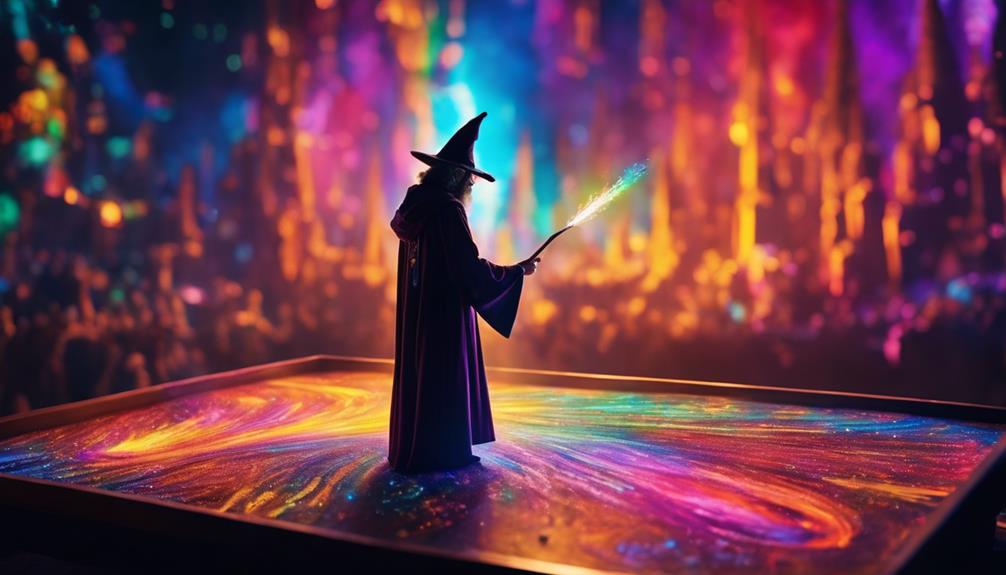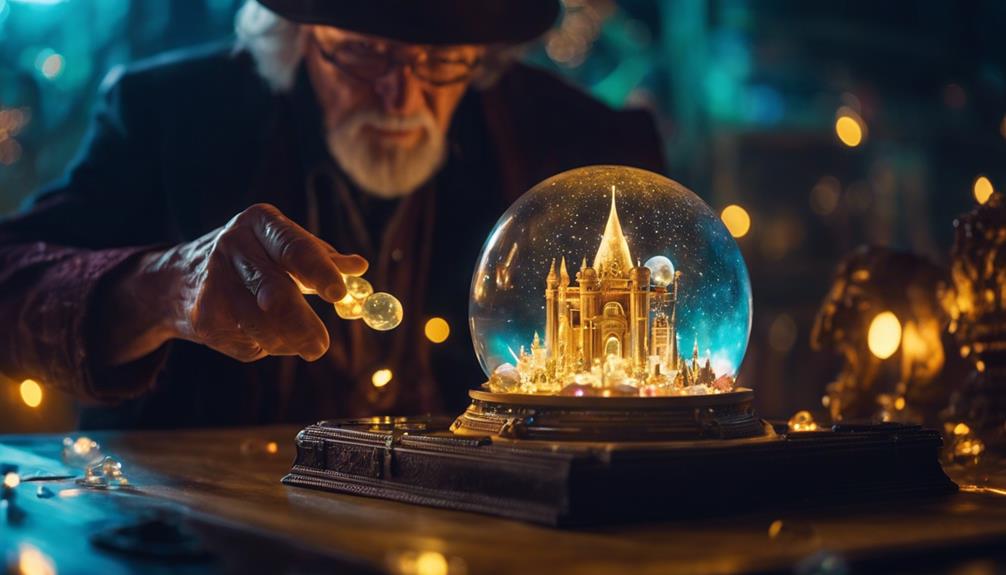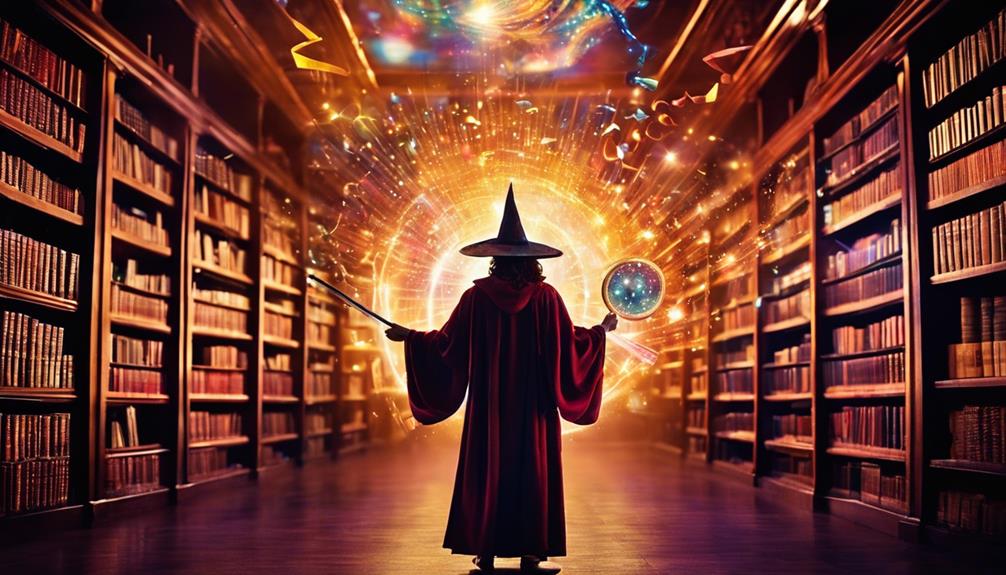AI Wizards: Creative Commons Mastery
In the fast-changing world of artificial intelligence, the mix of AI-generated art and intellectual property rights is tricky for artists and legal professionals. AI tools that create unique art pieces using algorithms have sparked debates about copyright, ownership, and the right way to use original artwork.
When artists like Karla Ortiz find their creations used in AI databases without their knowledge, it highlights the need for a better grasp of Creative Commons licenses and copyright rules. This topic calls for a deeper look into how we protect artists’ rights in a time of digital breakthroughs.
Using clear and simple words, it’s essential to discuss why understanding these legal frameworks matters. Instead of complicating things with jargon, we should provide real-world examples, like the situation with Karla Ortiz, to explain the importance of copyright laws in protecting artists’ work online.
Artists’ rights must be at the forefront as we progress with technological advancements in art.
Key Takeaways
In our digital era, the blend of AI-generated art and intellectual property rights presents a complex challenge for creators and legal experts. As seen in Karla Ortiz’s case, using artists’ works in AI databases without consent underscores the urgency of comprehending Creative Commons licenses and copyright norms. Discussing these legal structures in straightforward terms and using real-life scenarios to emphasize the significance of safeguarding artists’ online contributions is crucial.
Key takeaways:
- AI art intertwines with legal puzzles.
- Karla Ortiz’s story underscores copyright needs.
- Understanding Creative Commons is vital.
Artists’ rights are paramount as we navigate technological progress in art creation.
Understanding Creative Commons
Understanding the Creative Commons system is like learning the rules of a game that helps artists control how their work is used. This system is handy now, as AI and AI-created art complicate things.
Creative Commons licenses, like CC BY (which requires others to give credit to the creator), CC BY-SA (which lets others remix, adapt, and build upon your work as long as they credit you and license their new creations under the identical terms), and CC BY-NC (which lets others remix, adapt, and build upon your work non-commercially, and although their new works must also acknowledge you and be non-commercial, they don’t have to license their derivative works on the same terms), help balance the need for creators to maintain certain rights while allowing the public to access and use their work.
For artists today, it’s vital to know how to protect and share their creations, especially with the rise of digital and AI-driven art. The legal backing of Creative Commons licenses provides a flexible yet solid way to control how works are used. This ensures that creators can add to the collective knowledge and culture pool while protecting their interests. This balance is critical in the era of AI art and training data, underscoring the importance of Creative Commons in encouraging innovation while respecting the rights of creators.
Licensing AI-Generated Art

In the world of AI-generated art, licensing is crucial. It helps artists set clear rules on how others can use their work, including whether it’s okay for commercial purposes. Creative Commons licenses are a go-to for many, offering a way to communicate what’s allowed easily.
Artists can choose from licenses like:
- CC BY (which requires others to give credit)
- CC BY-NC (for non-commercial use only)
- Or even create custom licenses for their AI art
These options help protect artists’ creations. They make sure the art is used in ways that respect their wishes and help avoid misunderstandings about what’s okay and what’s not. It’s a way to balance the freedom to create with the need to be fair to the artist. This approach is vital for anyone looking to share AI art responsibly.
Ethical Considerations
Ethical concerns are critical in AI-created art, especially when protecting artists’ rights and ensuring data privacy and use are respected. This area is complex and demands careful attention to both the worries of artists and what technology can do. Artists like Holly Herndon and Mat Dryhurst have taken steps to protect artist rights with tools like Have I Been Trained, which helps artists see if their work was used without permission in AI training sets.
Some platforms, including Newgrounds, have decided not to allow AI-created images. This shows a growing awareness and concern for ethical practices in digital art. Projects like LAION’s initiative, which lets artists ask to have their work removed from databases, and the Content Authenticity Initiative, focusing on proper credit and authenticity of content, are part of the ongoing conversation about ethical AI art. These efforts highlight the need for a balance between innovation and respecting data use, privacy, opt-out options, and maintaining the authenticity of content and artist rights.
Case Studies in AI Art

Looking into specific examples of AI-generated art offers a deep understanding of ethical issues, especially regarding the rights of artists and concerns about data privacy. The situation of Karla Ortiz, who discovered her artwork within the dataset used by Stable Diffusion, highlights the challenges artists encounter in the era of AI art. This technology generates new images by learning from extensive collections of existing artwork and often incorporates pieces not meant for wide, public domain distribution.
Stable Diffusion’s use of the LAION-5B dataset has sparked discussions about the moral aspects of using artists’ works without their permission. This tool enables the creation of AI art for both commercial and non-commercial purposes. Greg Rutkowski’s popularity in AI art generators, with his name appearing around 93,000 times, shows how AI can potentially overshadow human artists, impacting their visibility and rights to their work.
Artists like Holly Herndon and groups like the Content Authenticity Initiative are actively developing AI and tools like Have I Been Trained. Their work is focused on safeguarding artists’ rights and ensuring that the creative process honors the original creators through proper acknowledgment and verifying the authenticity of content.
These examples shed light on the intricate balance between incorporating AI in art creation and honoring the rights and contributions of human artists.
Navigating Legal Challenges
As AI art generators like Stable Diffusion enter the scene, they stir up discussions about the need to update copyright laws. These tools create art using images they haven’t gotten permission to use, causing a stir among artists. Big companies like Adobe and Nikon support the Content Authenticity Initiative to fight this issue. This project aims to make digital content more transparent by adding watermarks that show where it comes from.
Artists such as Karla Ortiz and Greg Rutkowski are in the middle of this debate because AI uses their artwork without their approval. This unauthorized usage worries them about copyright and raises questions about whether AI-generated art can indeed be original. To tackle these concerns, a group of artists suggests that AI should be trained only with images that are free for everyone to use. They also recommend working together with AI creators, museums, and artists. This strategy aims to keep fostering innovation while respecting original creators’ rights.
Frequently Asked Questions
Does Wizards of the Coast Use AI Art?
- Wizards of the Coast incorporates AI in Magic illustrations.
- Raises questions about contracts, creativity, and ethics.
- Fans and artists debate over traditional vs. AI art.
What Is the Controversy With AI Art?
- AI art raises ethical issues, like copyright worries.
- It threatens traditional artists and cultural uniqueness.
- It’s sparking debates on artistic value and law changes.
What Is the Wizards of the Coast AI Scandal?
- Magic community outraged by intellectual property concerns.
- Fan backlash grows over artist compensation issues.
- Legal and ethical debates over digital rights intensify.
What Is the Most Advanced AI Art Generator?
- Stable Diffusion stands out in AI art creation.
- It uses advanced techniques for unique artworks.
- Essential tool for modern digital artists.
